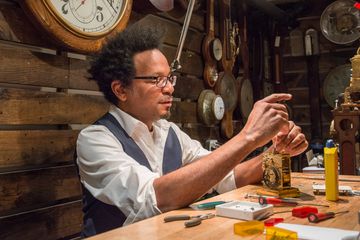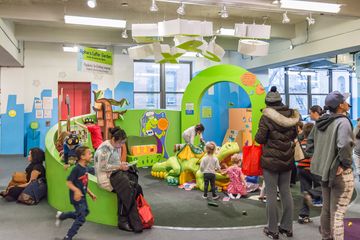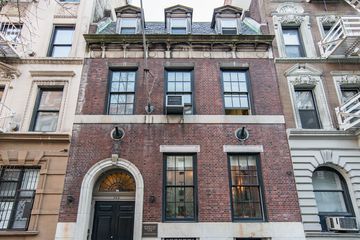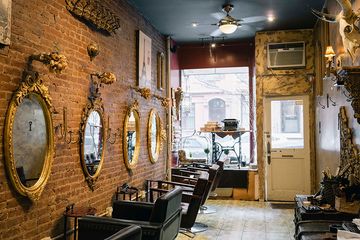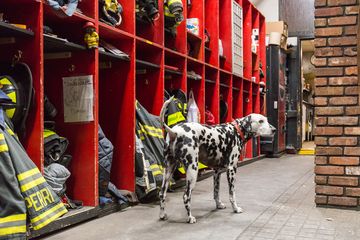Sutton Clocks is what we at Manhattan Sideways refer to as a true hidden gem. The low shop was lined on both sides with clocks dating back to the eighteenth century, set to different times. I understood why they all displayed different hours when the first one chimed and I imagined the deafening roar that would result if the thousands of clocks went off at once. Sebastian Laws, the youngest son of the original owner, met me at the door. His father, Knud Christenson, came to the United States from Denmark in the 1940s. He initially partnered with Kay Yeager, who owned Sutton Trading, a pawn shop. Knud was a Renaissance man and worked at many things, including importing fish and building furniture, but he quickly found his niche fixing clocks. He began working from a small loft on 61st Street. Sebastian told me how his father recognized a passion for fixing things and working with small parts in his youngest child and took Sebastian on as an apprentice. Sebastian took over the business in the 1990s, and when he lost his lease in 2012, he found this quaint space on 82nd Street. He is excited to have his first store front and to live in a relatively quiet neighborhood again after witnessing 61st Street turn into an extension of midtown. The clocks on display, which are all for sale, come from a variety of sources, including having been abandoned by previous owners. Sebastian pointed to a deep green one that resembled a portal on a submarine, saying that it dated back to 1780. His favorite clock on the wall, however, was a sturdy American clock with early twentieth century lettering, which he called a “strong workhorse. ” Though he now has the space to put clocks on the wall for retail purposes, his main occupation is repairing clocks. People bring him clocks of all shapes and sizes, from mantle clocks to fantastic grandfather clocks. When I asked him if there was a particular kind of clock that was most difficult to fix, he responded without hesitation: “cuckoo clocks. ” He then went on to explain that the Swiss souvenirs are often built as tourist traps rather than trusty timepieces. When I thought that I had seen all that there was to appreciate in this minute space, Sebastian guided me to his worktable in the back, which was surrounded by gears, pendulums, various tools of the trade, and hundreds more time pieces. For the most part, Sebastian’s siblings have not been involved in their father’s business, beyond doing some sweeping in the store and other odd jobs as children. Sebastian’s brother James, however, recently joined him to help with the administrative side of things, in an effort to allow Sebastian to focus on the hands-on work. “I enjoy solving puzzles, ” Sebastian told me. Though he learned a lot from his father, he admitted that his most valuable training came from the job itself, since each clock is different and must be examined as its own unique puzzle. At a certain point, he started repairing barometers along with clocks. He informed me that though the mechanisms are completely different, barometers are often lumped into the same pile as timepieces. Sebastian went on to tell me that his customers come not only from every part of the city, but from all over the country and around the world. He mentioned that quite a few regulars were also his father’s clients. He has a fascinating outlook on his career. He loves that the clocks that he handles each have a special tactile history. By looking at the markings on a clock, he can get into the head of the original horologist who made it and can track the life of the timepiece. He pointed out that a man who built a clock in London in the 1800s probably did not imagine that it would end up in Sebastian’s hands in New York in the twenty-first century. Similarly, one day in the future, horologists will trace clocks back to Sebastian and know when they passed through Manhattan.
